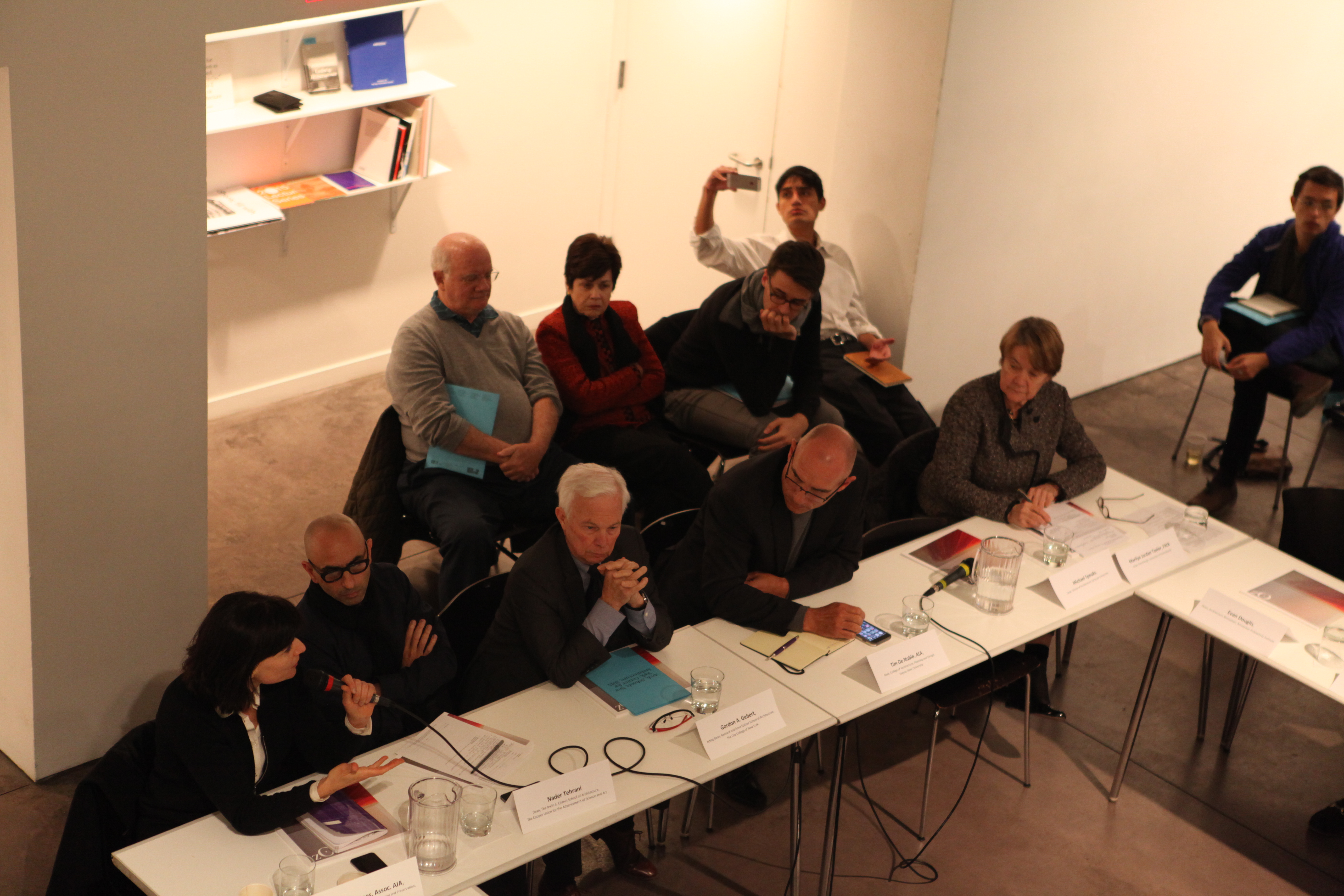by: Melissa Marsh
Every year, the Deans’ Roundtable is an opportunity to engage with the thought leadership behind our region’s best schools. For those who are passionate about the education of our next generation of architects and designers, it is not to be missed. Since it is held at the AIA New York Chapter, it is also a key moment to explore and debate the relationship between academic and professional worlds.
In fact, in a previous program, Winka Dubbeldam shared an anecdote about Columbia University’s effort to bring back architecture alumni and find out what they are doing, for purposes of expanding the definition of architecture. This idea resulted in a term which I have since called the “architectural diaspora,” and has inspired the AIANY Professional Practice Committee’s Transforming Architecture Practice programming.
This year’s program once again provided an informative and engaging debate. Initial remarks by Lance Jay Brown, FAIA, immediate past president of AIANY, welcomed us to the 11th year of provoking a dialogue on education and architecture in the broadest and more intimate contexts. He brought to bear thoughts of our global context – ”attacks upon the public realm,” from terrorism to climate change – which set a broad scope for conversation.
Current chapter president (and provocateur) Tomas Rossant, AIA, first reflected on the role of women in architecture, discussing his effort to bring as many female deans as possible to the table. He then set the stage with a set of themes where he sees potential for industry transformation and new areas of focus in education, including:
- A return to thinking about architecture as “making”
- Customization versus standardization and new methods of construction
- Architecture’s role in society, including the politics and legislation around the built environment
- Being a professional of the post-occupancy building/design
- Smartphones and interconnected buildings
- Computer automation of architectural services
- Persistent questions of profitability and social responsibility
Moderator Tim de Noble, AIA, reinforced Rossant’s annual theme “Architecture from the Edge of Practice,” and noted that accreditation has often encouraged a narrow definition of architecture. Yet, in the hard times of recession and the exciting post-recession moments, the greatest successes of our industry may be those companies that have shifted the boundaries of practice. De Noble complimented architects with the “amazing inventiveness to expand the periphery of practice.”
The roundtable debate began with two short questions that shaped most of the discourse: How do you prepare graduates to expand the traditional interpretation of design? How are you teaching expansive thinking, deep talent, agility, openness, and flexibility?
University of Pennsylvania’s PennDesign Dean Marilyn Jordan Taylor, FAIA, started off by suggesting that much of the push for change has been driven by students themselves, for everything from making and craft, to responses in the changing marketplace, to architecture’s social responsibility.
Columbia University Dean Amale Andraos, Assoc. AIA, brought up a number of skills that might be expected at other professional schools, particularly formalized programs for entrepreneurship, similar to those of business schools.
Parsons Dean of Constructed Environments Brian McGrath spoke of re-aligning the disciplines and learning from the built environment. He emphasized the importance of applied research during one’s education, and the opportunity to use Parsons’ urban context to engage students as creators during their tenure.
Dean of Yale University School of Architecture Robert A.M. Stern, FAIA, brought attention back to the core cognitive power of learning to draw, noting that “drawing is thinking,” implying that this is the most important element of an architectural education. He believes that “the periphery will take care of itself” if we focus on the core. In terms of the expanded architectural field, Stern argued that the core value of architecture is not limited by what one chooses to do with their career.
The debate largely centered on the questions raised by participants’ responses to the guiding questions. Is there a “periphery” of architecture? Or is architecture an educational path that turns into a way of being and is never abandoned, no matter the professional pursuits of graduates?
Collectively, the deans were frank about their own intentions relative to educating the next generation. Their diversity demonstrates that there are many different opportunities, both within education as well as in the diverse applications of architectural education. One might conclude that this is a phenomenal education to have, giving a student an ability to do almost anything in the modern-day careers in science, technology, engineering, arts, and media.
Event: Deans’ Roundtable
Location: Center for Architecture, 11.14.15
Speakers: Gordon A. Gebert, Acting Dean, Bernard and Anne Spitzer School of Architecture, The City College of New York; Nader Tehrani, Dean, The Irwin S. Chanin School of Architecture of The Cooper Union, The Cooper Union for the Advancement of Science and Art; Amale Andraos, Assoc. AIA, Dean, Graduate School of Architecture, Planning and Preservation, Columbia University; Moshen Mostafavi, Int’l Assoc. AIA, Dean, Graduate School of Design, Harvard University; J. Meejin Yoon, Professor, Head, Department of Architecture, MIT; Urs P. Gauchat, Hon. AIA, Dean, School of Architecture, New Jersey Institute of Technology; Michael Schwarting, Professor, School of Architecture and Design, New York Institute of Technology; Brian McGrath, Dean, School of Constructed Environments, Parsons the New School for Design; Thomas G. Hanrahan, AIA, Dean, School of Architecture, Pratt Institute; Robert Shibley, FAIA, Dean, School of Architecture and Planning, SUNY University at Buffalo; Michael Speaks, Dean, School of Architecture, Syracuse University; Marilyn Jordan Taylor, FAIA, Dean, PennDesign, University of Pennsylvania; Evan Douglis, Dean, Architecture Rensselaer, Rensselaer Polytechnic Institute; Robert A.M. Stern, FAIA, Dean, School of Architecture, Yale University
Organized by: Center for Architecture
Sponsored by: AIANY 2015 President’s Circle











